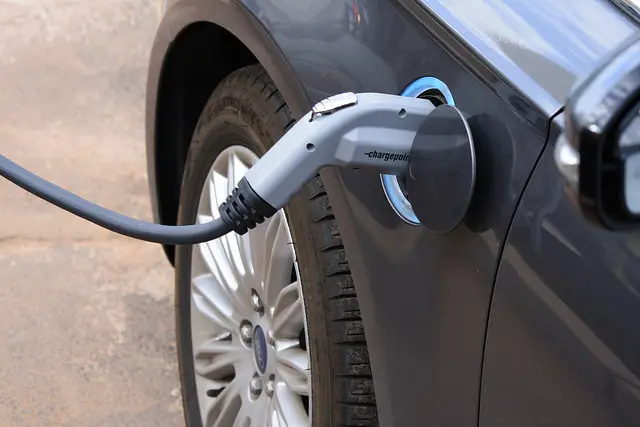Electric car technology is advancing rapidly, and the latest figures suggest that the Isle of Wight is getting on board the Electric car, green revolution.
Over the 2017-18 financial year, the number of registered plug-in vehicles in the area increased by 49%.
Up another 50% in a year
Recently released Department for Transport statistics show the number of registered electric or plug-in hybrid cars, vans and micro cars called quadricycles on the Isle of Wight for each quarter of the year.
From January 2017 to March 2017 there were 122 electric vehicles.
However by the latest quarter, from January to March this year, that figure had grown to 182, a jump of 60.
That’s less than the increase of 2,401 in Peterborough, which has the highest percentage of plug-in vehicles of any local authority in the United Kingdom.
Changing times
However, back in 2013 on the Isle of Wight there were just seven electric cars, which shows the progress the industry has made in a short time.
Over the past few years manufacturers have increased the range of their vehicles, and prices have lowered, helping fuel the rise in environmentally friendly vehicles.
Range increasing
The latest Nissan Leaf, the UK’s most popular entirely electric car, can now travel 235 miles before it needs to be recharged, 80 miles more than the previous version.
Last month BP announced it would follow Shell and install charging points at its petrol stations and Dyson has also said it plans to release an electric car by 2020.
Reduced running costs
One advantage electric car users have over other vehicles is that they don’t have to pay road tax, as they do not release any emissions.
Electricity is also far cheaper than petrol and diesel, and green drivers have the satisfaction of helping save the planet.
However plug-in vehicles still make up a tiny percentage of the cars on the road in the Isle of Wight.
Compared with the 182 electric cars on our roads, there are 81,811 cars and vans in total, according to the latest complete vehicle registration data from 2017.
Data Reporter, Ralph Blackburn, shares this latest news as part of as part of the new data collaboration with Urbs Media and Press Association. Ed
Image: noyafieldsorg under CC BY 2.0





